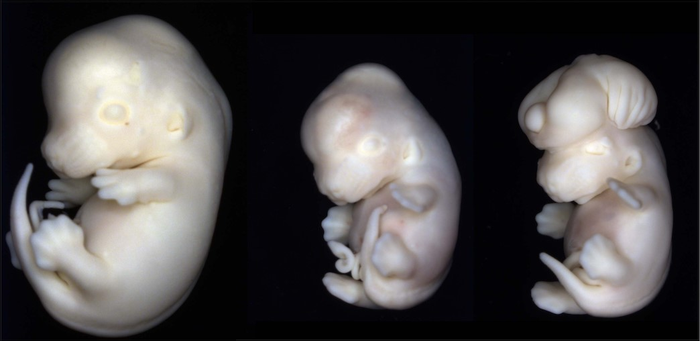Valproic acid (VPA)—a drug used to treat epilepsy, migraine, and bipolar disorder—can cause birth defects when taken during pregnancy. A team headed by researchers at Institut de Génétique et de Biologie Moléculaire et Cellulaire (IGBMC) reported on the results of research in mice and in human organoids, indicating that one reason for these effects may be because valproic acid puts some cells of the developing nervous system into senescence, a kind of halted state that keeps them from growing and dividing correctly.
Muriel Rhinn, PhD, first author of the team’s published study in PLOS Biology, commented, “While cellular senescence has long been associated with aging and age-related disease, we now show that aberrant induction of senescence can also contribute to developmental defects. As valproic acid is strongly linked to cognitive defects and autism spectrum disorder, this study now introduces an exciting link with senescence, supporting how additional studies are needed.”
The paper by corresponding author Bill Keyes, PhD, Rhinn, and colleagues is titled, “Aberrant induction of p19Arf-mediated cellular senescence contributes to neurodevelopmental defects,” in which the researchers concluded, “Together, these findings demonstrate that aberrantly induced senescence perturbs embryonic development, leading to developmental defects, and advances our understanding of how VPA causes neurodevelopmental disorders.”
VPA is widely used to treat a number of illnesses. However, since its initial use, there have been many thousands of cases of women taking VPA during pregnancy and subsequently giving birth to children with birth defects, including spina bifida, facial alterations, and heart malformation. In addition, about 30–40% of exposed infants develop cognitive impairment and autism spectrum disorder (ASD). However, the authors noted, “How VPA causes these developmental defects remains unknown.”
The connection between VPA exposure and birth defects has been aided significantly by studies in rodent and primate models, leading to the hypothesis that cognitive defects arise from disruption of early neurodevelopment, the authors continued. The researchers noted that VPA is broadly used in cancer therapy and has been shown to induce cellular senescence in certain settings. Given this link, they continued, “… we investigated whether aberrant activation of senescence by VPA exposure might contribute to the associated developmental defects.” For their newly reported study, Keyes and colleagues used both human organoids—three-dimensional clusters of human cells grown in the lab—as well as mice to study embryonic exposure to VPA.
Cellular senescence is a form of permanent cell cycle arrest, and is mediated by the activation of cell cycle inhibitors including p21, p16Ink4a, and p19Arf. Through their studies, the team discovered that VPA induces cellular senescence in neuroepithelial (NE) cells, the stem cells that give rise to the central nervous system. “… we identify that the NE cells are the site of senescence induction,” the team noted. “As this population of cells is a critical precursor of all mature cell types in the brain, it stands to reason that this is one of the most perturbed population of cells in neurodevelopmental disorders … As the majority of infants with problems associated with VPA exposure have cognitive defects, including developmental delay and ASD, this suggests that senescence in the NE cells could be a significant contributor to these outcomes.”
The researchers further demonstrated that p19Arf was responsible for this VPA-induced senescence. In mice lacking p19Arf, VPA exposure during pregnancy no longer caused microcephaly (small head size) or changes to gene expression patterns associated with ASD, although VPA did lead to other defects even in these mice. “Critically, through genetic and functional studies, we identified p19Arf as the instrumental mediator of senescence and microcephaly, but, surprisingly, not exencephaly and spinal defects,” they continued.
The work is one of the first to associate cellular senescence with developmental defects, the authors suggested. “A major finding of this work is that it makes an exciting functional connection between aberrant cellular senescence and developmental defects. While abnormal induction or chronic accumulation of senescent cells has been linked to many adult and age-related diseases, we demonstrate here a causative role for senescence in neurodevelopmental defects … Overall, the discovery that atypical activation of senescence in the embryo can perturb development raises the intriguing possibility that it may also contribute to defects in developmental contexts beyond those we studied here and highlights how the study of mistimed senescence in developmental disorders merits further study.”







